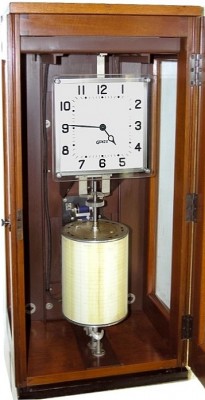SIMPLE PROBLEMS, SIMPLE SOLUTIONS
The human race has
developed into an excellent species with immense mind power. It can unravel the
secrets of nature and its complex riddles with different ways and methods that
it has evolved. So much so, it can hardly recognize a small problem when it
sees one. With so much of accomplishments behind it, the mind actually fails to
see a simple solution to any problem – big or small. Everything has to be
analyzed, everything has to be attacked from every little corner and everything
has to be approached in a big way. There are no small solutions to big problems
and no small solutions to small problems too.
How then can you
explain away this situation? It was the height of anti apartheid risings in South Africa .
John was in a hurry leaving the town and he was walking past a large bungalow,
to board a bus. There he chanced to meet two small boys about seven years of
age. Nothing strange in that, but one boy was fair of skin while the other was
black. He stopped and took further notice of them. He was astonished when he
saw the white boy order the black one around, to go fetch this and that. Mr.
John, himself a dark skinned person felt very crestfallen and wondered at the
state of affairs where even a small child practices apartheid. As he was in a
hurry to catch his bus he left immediately. Once he left the town limits he
forgot all about it promptly.
After about six
months he had to return to the same town. As he happened to pass through that
particular bungalow he immediately remembered the incident he saw during the
previous occasion. His curiosity aroused,
he took extra efforts to go close to the house and there again he saw the same
two boys playing around. To his utter surprise he saw the dark boy now ordering
the white around. He stood confused and presumed that the anti apartheid violence
had seeped so much that even kids were being aware of it. He felt sad. He was a
man of moderate tempers and suppression of any one or any form was totally not
to his taste.
He was wondering if
he should intervene and teach the boys some humanity, when he saw a white man
at the extreme end of the garden silently watching the boys in action. Now John
did not want the white man to feel the pinch of apartheid so he hurried over to
him and said “don’t worry these kids do not know what they are doing. The other
day I saw the dark one being ordered around”. The other man startled out of his
stupor on hearing John speak and said “Oh, no, I do not misunderstand, for both
are my kids and they play the “FETCH” game. The winner is the one who fetches
the fastest.”
Here is a situation
where the simple children’s game had been interpreted as some racial apartheid
practice. Most often quite a number of family feuds spark at the children’s
games. How we adults try to carry our
views and differences to the children’s world too? It would be best on such
occasions for the grown ups to merely ignore the juniors and allow them to sort
their differences out in the best way known to them.
Well, if this be the
case in the emotional front, we do not fare better in the industrial arena
either. Take the case of a famous Japanese soap company which positioned itself
in the market as the only firm that sold the soap packed in an attractive soap
box. They were quite successful in carving a niche for themselves in the
consumables market and in fact, they capitalized on this aspect by constantly
advertising that they sold the soap with the box.
Trouble began when
complaints began creeping in that some of the boxes sold in the shops were
returned as being empty. It was not just a single complaint to be ignored. The
management realized that something had to be done immediately to prevent the
problem from avalanching into a major crisis.
The problem was analyzed from all angles and it was localized that the
problem was only in the packing and distribution section. The R&D
department was called in and they came out with a proto type of a huge x-ray
machine that would scan each of the box in the production output line, then
another machine will weed out the empty ones. The cost of these machines worked
into several crores and even then the accuracy sigma hovered at an unpleasant
high. Meanwhile time was ticking on and
holding the stock any further would mean heavy loss to the company both
monetarily and name wise too. The whole company was at a high hot. Watching the
burst of activity going in the factory, a humble worker enquired what was going
on. Then he got the news about the empty box. Muscling up enough courage, he walked up to
one of the top brass officer and volunteered that he could solve the problem
very easily. The entire middle level management tried to brush him off like a
fly. But the top management by then was so desperate for a solution that they
were willing enough to take the advice of anybody, as long as the problem was
resolved. The worker wanted just three
or four huge pedestal fans which he positioned in the output line. And very
easily the empty soap boxes fell off the line, into a carton placed beneath the
conveyor belt. This way it was ensured that the empty boxes did not escape into
the market. Simple indeed!!


